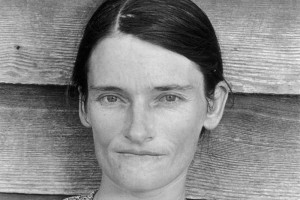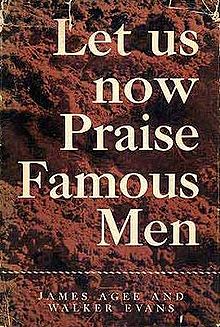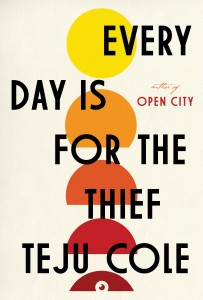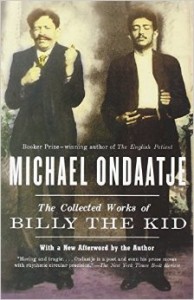
“It’s possible that a novelist begins a novel in an attempt to open up a photograph, or several photographs. I will like to write such a novel. It’s this sort of future I wish to imagine for photographs—a world in which they are bound up with novels.”
The deeply felt desire of the Nigerian critic and writer Emmanuel Iduma.
James Agee, Allie Mae Burroughs, wife of cotton sharecropper, Hale Country, Alabama, 1936. Courtesy Library of Congress.
In the Interests of the Future of Photography
I
“The photographs are not illustrative. They, and the text, are co-equal, mutually independent, and fully collaborative. By their fewness, and by the impotence of the reader’s eye, this will be misunderstood by most of that minority which does not wholly ignore it. In the interests, however, of the history and future of photography, that risk seems irrelevant, and this flat statement necessary.”
This paragraph in James Agee’s preface to Let Us Now Praise Famous Men should not be read in passing. The prevailing logic is that there’s a struggle for dominance between text and image each time they are placed side by side. In such instances, one form corroborates the other, or is made subservient to the other—either the photograph is muted by the text, or the text is muted by the photograph. Examples abound in daily reportage, within the pages of fashion magazines and on Instagram feeds, where selfies elicit threads of comments. Yet Agee points to an alternative logic, “in the interests….of the….future of photography.”
The tortured narrator in Clarice Lispector’s The Hour of the Star says, “I swear that this book is composed without words: a mute photograph.” Lispector must have understood that in certain ways co-equality is possible: you might not get any more from a photograph than you would from a body of text, whether a tome or a novella. A wordless book is equated to an unspeaking photograph, both forms stripped bare.
II
A photograph does not work like a novel. At the heart of their dissimilarity is the question of certitude, a question of the distinction between what is certain and what is being represented as certain. The novel would provide clues for certainty, but the photograph would point to itself as an authenticated object. It’s the reason why Roland Barthes claims he goes to “the photographer’s show as a police investigation,” to learn at last what he no longer knows about himself. While he’s on this voyage of discovery, he declares (in Camera Lucida):
“No writing can give me this certainty. It is the misfortune (but also perhaps the voluptuous pleasure) of language not to be able to authenticate itself.”
Any attempt to examine a novel and a photograph side by side begins with this question of authentication. Textual language is unable to authenticate itself, but a photographic image is by default authenticated by the reality it depicts. Yet novelists would want you to believe that their representations are true, or at least probable, and they do not work with the assumption that their universes are nonexistent. And photographers believe they are looking at the visible world, examining its mystery and rendering it on a surface.
The photograph, in its essence, bears an evidential burden—it is a document tasked with proving. A document, by its original meaning dating to the 1640s, refers to the act of teaching and admonition. A few centuries later it was arrested by jurisprudence and included in the lexicon of documentary evidence law. Hence, it is in this jurisprudential sense that the photograph is considered as an authenticator. The law of evidence is founded on the assumption that if materials are provided, a case could be proved beyond reasonable doubt. In the same vein, photographs, documentary photographs especially, are produced with the assumption that the visible, and therefore the real, can be made apparent beyond reasonable doubt.
To speak, also, about authentication is to deal with referents. The photograph is said to carry the subject it reproduces with itself; the visible world is incised using a camera, and rendered via chemical means on a surface. In Polish, the word for a picture (zdjęcia) means “taking-offs” or “removals.” The camera is a surgical blade; each snapshot takes off an image, removes it from the world, in the process authenticating it as a referent of the visible.
By these standards, a novel fails as an authenticator. It is based on—hence references—the imagination, not the “real” world. If the novel is a surgical blade, it incises the imagination. As worthy of attention as the imagination is, as voluptuously pleasurable, it remains by nature fictional—in this sense the imagination acts as an intermediary between the world and the fictional universe of a novel.
Barthes in Camera Lucida continues his invective against language as follows:
“The noeme of language is perhaps this impotence, or, to put it positively: language is, by nature, fictional; the attempt to render language unfictional requires an enormous apparatus of measurements: we convoke logic, or, lacking that, sworn oath; but the Photograph is indifferent to all intermediaries: it does not invent; it is authentication itself; the (rare) artifices it permits are not probative…”
You will perceive that Barthes is, in the final analysis, distinguishing between a novel and a photograph. Geoff Dyer makes the observation that in his final years Barthes had speculated on the possibility of writing a novel; and Dyer goes ahead to propose that he is considered an heir of Kafka. (Recall that Villem Flusser, in discussing the work of photographers in Towards a Philosophy of Photography, referred to the “world of Kafka, in fact.) And so Barthes’ interest in language, and in writing fiction, came from an impetus that considered authentication from the point of view of both novels and photographs. Taken this way, it is promising to consider a novel and a photograph side by side; both are serving the interests of duration, representation, and authentication. Their dissimilarities cannot be done away with, but their task as signifiers can be examined—for in the final analysis, I am interested in objects that point to the real.
Both photographs and novels serve to open up the real; whether or not they work with intermediaries is hardly the question. I wouldn’t be bothered by W. J. T Mitchell’s proposition, which treats the relationship between literature and the visual arts as essentially “paragonal”: as a struggle for dominance between the image and the world. Barthes never argued for the dominance of either of the representational forms; he was thinking about their tasks, how they performed in relation to the visible world.
III
It’s possible that a novelist begins a novel in an attempt to open up a photograph, or several photographs. I will like to write such a novel. It’s this sort of future I wish to imagine for photographs—a world in which they are bound up with novels. In my recent readings, I have found authors who achieved exactly this. Aleksandar Hemon in The Lazarus Project, Ivan Vladislavic in Double Negative, Teju Cole in Everyday is for The Thief, Daša Drndic in Trieste, and Michael Ondaatje in The Collected Works of Billy the Kid.




